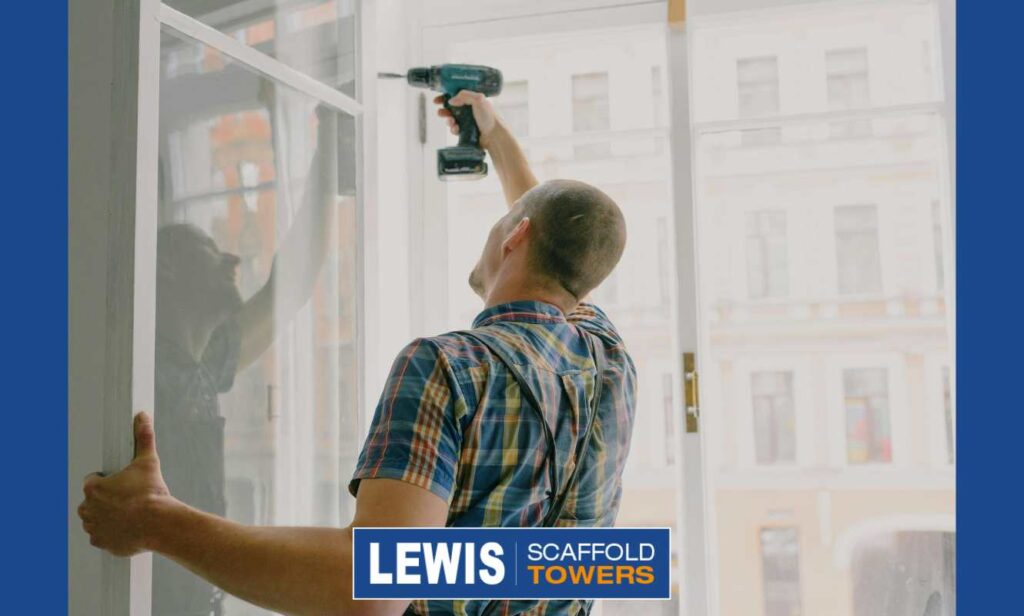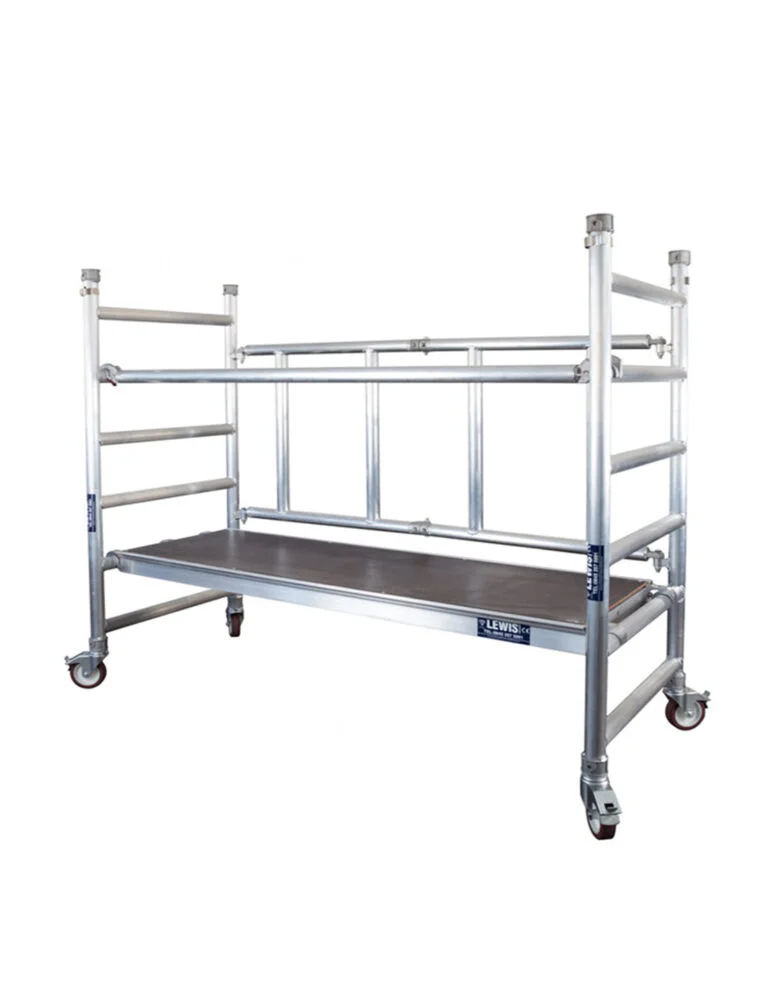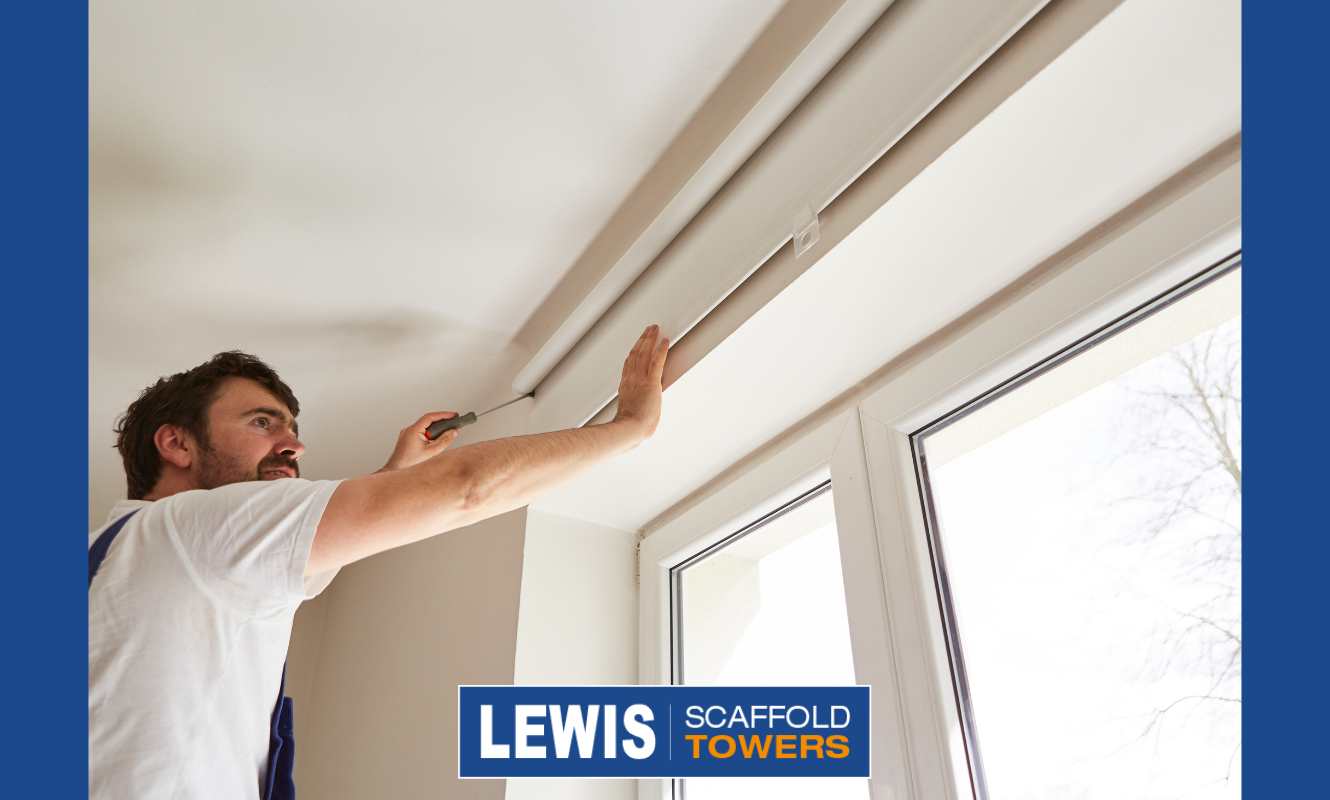Scaffold towers or ladders can be a critical choice for many tradespeople. Unless you are in the trade, you may not realise the potential accidents that can happen to window installers. As a British access equipment manufacturer, we understand the implications of choosing the wrong ladder or access tower for the job. That is what makes the following question about scaffold towers or ladders so important.
Are Scaffold Towers Or Ladders Best For Window Installers?
The answer is not straightforward. In the same way as safe working from height needs to be approached mindfully and respected. It is not simple but entirely necessary.
Did You Know That In 2018, A UK Company Was Fined £850K After A Window Installer Broke His Kneecap?
In this case, the window installer fell three metres from an unsecured ladder.
The HSE’s investigation found:
• the company’s system for planning work at height was inadequate in that it failed to ensure that work was carried out in a safe manner
• windows were not routinely installed from the inside
• ladders were used in a way that constituted serious risk
• there was no system of monitoring or supervision in place
• operatives were left to their own devices.

Commenting after the hearing, HSE inspector Stuart Whitesmith said: “This incident could easily have been prevented had the company implemented reasonably practicable precautions.
“Such precautions include having effective and enforced safe systems of work, whereby windows are installed internally where possible, or by using suitable access solutions which provide edge protection, and having a formal system in place to ensure works are appropriately supervised.’’
In 2016, There Was An Even Worse Window Fitter Incident When A Fitter Fell From An Unsecured Ladder And Died The Following Day
A window fitter was helping to install UPVC windows at a 3 storey house in Brighton. He was working from an unsecured ladder when it slipped sideways, causing him to fall to the ground. He was taken to hospital suffering from head injuries but died the following day.
The HSE’s investigation into the incident found that the installation company failed to ensure that the work at height was adequately planned and carried out in a safe manner. The company pleaded guilty to breaching Regulation 4(1) of the Work at Height Regulations and was fined £10,000.
Understanding the Needs of Window Installers
In many cases, a scaffold tower provides a safer and more practical solution, offering a stable platform that can accommodate multiple workers and materials.
However, the best option depends on the specific requirements of the task, including the height, duration, and complexity of the work.
The choice between scaffold towers and ladders depends on understanding the specific needs of window installation projects.
Window installation projects vary widely in terms of height access requirements and safety priorities.
Height Access Requirements for Different Buildings
Different buildings present unique height access challenges. For instance, high-rise buildings require more complex access solutions, such as scaffold towers, to ensure safe and efficient work practices.
In contrast, lower buildings might be adequately serviced with ladders or smaller, more portable access equipment.
| Building Type | Height Access Requirement | Suitable Access Equipment |
| High-rise | Complex, multi-level access | Scaffold towers |
| Low-rise | Simple, single-level access | Ladders or portable towers |
Safety Priorities and UK Regulations
Safety is paramount in window installation, with UK regulations mandating rigorous safety standards for height access equipment.
Window installers must comply with regulations such as the Work at Height Regulations 2005, ensuring that their chosen access equipment
meets stringent safety criteria. But each job requires a unique assessment to decide if scaffold towers or ladders are the best choice.
Scaffold Towers for Window Installation
Scaffold towers have become an indispensable tool in the window installation industry, offering a stable and secure working platform.
They are particularly useful for tasks that require working at heights for extended periods.

Key Features and Safety Benefits
Scaffold towers are designed with safety in mind, featuring guardrails and toe boards to prevent falls and accidents.
They provide a spacious working area, allowing multiple workers to perform tasks simultaneously, thus enhancing productivity.
Their sturdy construction ensures stability, even on uneven ground, reducing the risk of accidents.
The use of scaffold towers also complies with UK health and safety regulations, providing a legal and safe working environment.

Setup Time and Transportability
One of the significant advantages of scaffold towers is their relatively quick setup time.
Modern scaffold towers are designed to be easily assembled and disassembled, minimising downtime and allowing workers to start their tasks promptly.
Additionally, many scaffold towers are mobile, featuring castors that enable easy movement around the worksite.
This mobility is particularly beneficial for projects that require working in multiple locations or at different heights.
Cost and Maintenance Considerations
While the initial cost of scaffold towers can be higher than that of ladders, they offer long-term cost savings through reduced setup times and increased productivity.
Regular maintenance is essential to ensure the longevity and safety of scaffold towers.
Proper inspection and maintenance routines can help prevent accidents and reduce the need for costly repairs or replacements.
By investing in high-quality scaffold towers and maintaining them properly, window installers can enjoy a safe and efficient working experience.
Are Scaffold Towers Or Ladders Best For Window Installers?
The choice between scaffold towers and ladders is crucial for window installation projects.
Window installers must consider several factors, including the height of the building, the duration of the task, and the safety regulations in place.
Ladders have been a traditional choice for many window installation tasks, especially for lower heights or shorter duration jobs.
However, their suitability depends on various factors, including the type of ladder used.
Types of Ladders Suitable for Window Installation
There are several types of ladders that can be used for window installation, including step ladders, extension ladders, and trestle ladders.
Step ladders are ideal for tasks that require a stable, self-supporting ladder, while extension ladders are better suited for reaching higher windows.

Manoeuvrability and Versatility Advantages
Ladders offer significant advantages in terms of manoeuvrability and versatility.
They are generally easier to transport to different locations and can be used in a variety of settings, including confined spaces where scaffold towers might be impractical.
The ability to quickly adjust the height and position of ladders makes them particularly useful for tasks that require a high degree of flexibility.
Safety Limitations and Risk Assessment
Despite their advantages, ladders have significant safety limitations. They are more susceptible to accidents caused by improper use or placement.
It is essential to conduct a thorough risk assessment before using ladders for window installation.
| Safety Consideration | Ladders | Scaffold Towers |
| Stability | Lower stability, risk of tipping | Higher stability, less risk of tipping |
| Height Access | Suitable for lower to medium heights | Suitable for medium to high heights |
| Setup Time | Quick to set up | More time required for setup |
As indicated in the table, while ladders are quicker to set up and offer flexibility, they have limitations in terms of stability and height access compared to scaffold towers.
You can find more articles focused on working at height safety here.
You may also enjoy How Do I Choose the Right Size Trade Extension Ladder?


